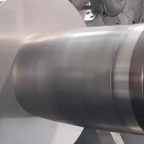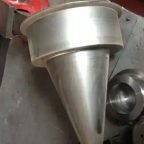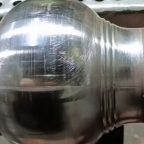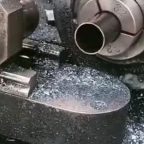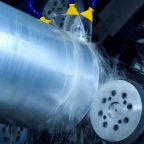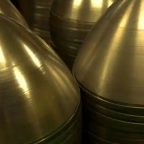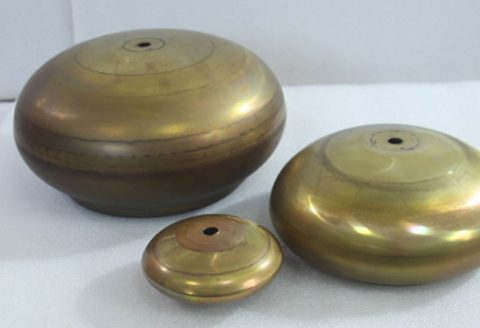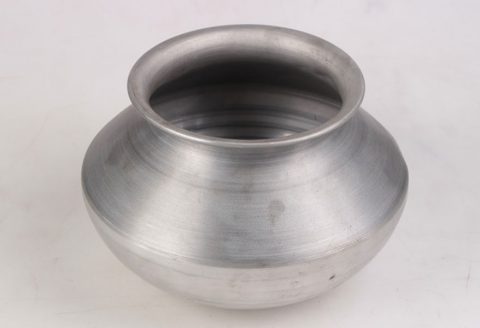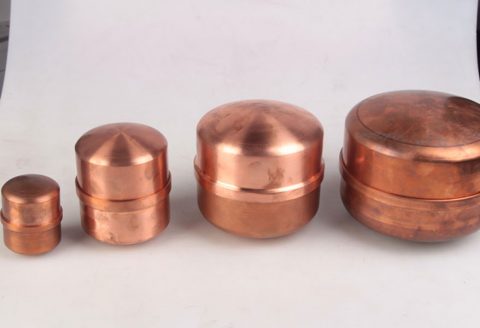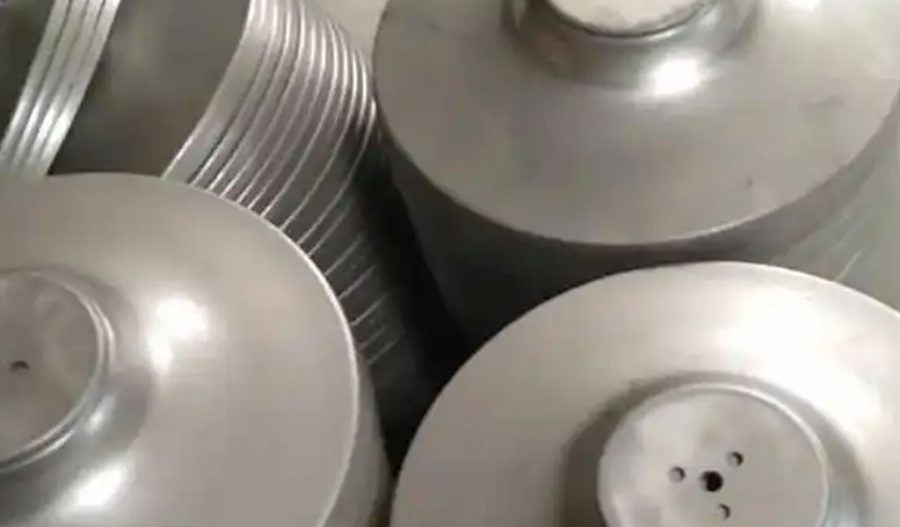
Topology optimization is a mathematical method used in engineering design to optimize material distribution within a given design space, aiming to achieve the best structural performance while adhering to specific constraints such as weight, volume, or manufacturing limitations. When applied to the design of complex component spinning—a manufacturing process where a flat metal disc or tube is rotated at high speed and formed into an axially symmetric part—topology optimization offers significant potential to enhance efficiency, reduce material usage, and improve mechanical performance. This article explores the integration of topology optimization in the spinning process for complex components, delving into its theoretical foundations, practical applications, computational methodologies, and comparative analyses with traditional design approaches. The discussion is structured to provide a comprehensive understanding of the subject, suitable for engineers, researchers, and academics in mechanical and manufacturing engineering.
The spinning process, historically rooted in ancient metalworking techniques, has evolved into a sophisticated manufacturing method used in industries such as aerospace, automotive, and energy. Complex components, such as turbine disks, pressure vessels, and intricate automotive parts, demand high precision, structural integrity, and minimal material waste. Traditional spinning relies heavily on empirical knowledge and iterative prototyping, which can be time-consuming and costly. Topology optimization, by contrast, leverages computational algorithms to systematically determine the optimal material layout, enabling the design of components that are lighter, stronger, and more cost-effective. This article examines how topology optimization transforms the design process for spinning, addressing challenges such as material flow, stress distribution, and manufacturability.
Historical Context of Component Spinning
Component spinning, also known as metal spinning or spin forming, traces its origins to ancient civilizations, where artisans used rudimentary tools to shape metals into functional objects. The modern era of spinning began in the 19th century with the advent of mechanized lathes, enabling the production of axially symmetric components with greater precision. By the 20th century, spinning became a staple in industries requiring high-strength, lightweight parts, particularly in aerospace for components like jet engine casings and satellite dishes.
The process involves clamping a metal blank (typically a flat disc or tube) onto a rotating mandrel and applying localized pressure with a tool to deform the material into the desired shape. Spinning can be categorized into conventional spinning, shear spinning, and flow forming, each with distinct mechanics and applications. Conventional spinning maintains the blank’s thickness, while shear spinning reduces thickness to achieve conical or tapered shapes, and flow forming elongates the material for thin-walled cylindrical components. These variations introduce complexities in design, particularly for components with non-uniform geometries or stringent performance requirements.
Traditional spinning design relies on trial-and-error, guided by the expertise of skilled operators. Designers specify the mandrel shape, tool path, and process parameters based on experience, often requiring multiple prototypes to achieve the desired outcome. This approach, while effective, is inefficient for complex components where material efficiency and structural performance are critical. The introduction of computational tools, particularly finite element analysis (FEA) and computer-aided design (CAD), marked a significant advancement, enabling simulations of material deformation and stress distribution. However, these tools alone do not optimize material usage or account for the full range of design constraints, setting the stage for topology optimization to revolutionize the field.
Fundamentals of Topology Optimization
Topology optimization is a subset of structural optimization that determines the optimal material distribution within a design domain to maximize performance metrics such as stiffness, strength, or thermal efficiency while satisfying constraints like volume fraction or manufacturing limits. Unlike size or shape optimization, which adjust predefined parameters, topology optimization allows for the creation of novel geometries by iteratively removing or redistributing material based on computational algorithms.
The mathematical foundation of topology optimization lies in continuum mechanics and numerical methods. The design domain is discretized into finite elements, and the optimization problem is formulated as:
[ \text{Minimize: } f(\rho, \mathbf{u}) ] [ \text{Subject to: } g_i(\rho, \mathbf{u}) \leq 0, \quad i = 1, \dots, m ] [ 0 \leq \rho_e \leq 1, \quad \forall e \in \Omega ]
where ( f ) is the objective function (e.g., compliance or weight), ( \rho ) is the density variable representing material presence (0 for void, 1 for solid), ( \mathbf{u} ) is the displacement field, ( g_i ) are constraints (e.g., volume or stress limits), and ( \Omega ) is the design domain. The density variable ( \rho_e ) for each element ( e ) is adjusted iteratively to achieve the optimal layout.
Common algorithms for topology optimization include the Solid Isotropic Material with Penalization (SIMP) method, level-set methods, and evolutionary structural optimization (ESO). SIMP, the most widely used, penalizes intermediate densities values to favor binary (0 or 1) solutions, ensuring manufacturable designs. The optimization process is typically coupled with FEA to evaluate structural performance at each iteration, making it computationally intensive but highly effective for complex problems.
In the context of spinning, topology optimization must account for the dynamic nature of the process, including material flow, plastic deformation, and contact mechanics between the tool and workpiece. This requires integrating process-specific constraints, such as thickness variation, rotational symmetry, and tool accessibility, into the optimization framework. The resulting designs are not only structurally optimal but also tailored to the spinning process, reducing waste and improving manufacturability.
Integration of Topology Optimization in Spinning Design
Theoretical Framework
Applying topology optimization to spinning involves adapting the general optimization framework to the unique mechanics of the process. The design domain is typically defined as the initial blank geometry (e.g., a flat disc or tube), and the objective is to minimize weight or maximize stiffness while ensuring the final component meets performance criteria under operational loads. Constraints include volume fraction, minimum thickness to avoid tearing, and geometric symmetry to maintain compatibility with the spinning process.
The governing equations for spinning are derived from continuum mechanics, accounting for large plastic deformations and dynamic loading. The material is modeled as elasto-plastic, with flow rules based on von Mises yield criteria. The optimization problem can be expressed as:
[ \text{Minimize: } W = \int_{\Omega} \rho , dV ] [ \text{Subject to: } \sigma_{\text{max}} \leq \sigma_{\text{yield}}, \quad t_{\text{min}} \leq t \leq t_{\text{max}} ] [ K \mathbf{u} = \mathbf{F}, \quad V \leq V_{\text{max}} ]
where ( W ) is the component weight, ( \sigma_{\text{max}} ) is the maximum stress, ( \sigma_{\text{yield}} ) is the yield stress, ( t ) is the thickness, ( K ) is the stiffness matrix, ( \mathbf{u} ) is the displacement, ( \mathbf{F} ) is the applied load, and ( V_{\text{max}} ) is the maximum allowable volume.
The optimization process is coupled with a spinning simulation, typically using explicit FEA to capture the transient behavior of material deformation. The tool path and mandrel geometry are treated as design variables, allowing the optimization to influence both the component shape and the manufacturing process. This integrated approach ensures that the optimized design is feasible within the constraints of spinning equipment and material properties.
Computational Implementation
Implementing topology optimization for spinning requires specialized software that combines optimization algorithms with process simulation. Commercial tools like Altair OptiStruct, ANSYS Topology Optimization, and open-source platforms like ToPy are commonly used, with custom scripts to incorporate spinning-specific constraints. The workflow involves the following steps:
- Define the Design Domain: Specify the initial blank geometry and allowable design space, accounting for rotational symmetry.
- Set Objectives and Constraints: Define the optimization goal (e.g., minimize weight) and constraints (e.g., stress limits, thickness bounds).
- Discretize the Domain: Mesh the blank using finite elements, typically 3D solid elements for accuracy in capturing thickness variations.
- Simulate Spinning: Perform an FEA-based simulation of the spinning process, modeling material flow, tool contact, and deformation.
- Optimize Topology: Apply the optimization algorithm (e.g., SIMP) to iteratively adjust material distribution, updating the simulation at each step.
- Post-Process Results: Convert the optimized density field into a manufacturable geometry, smoothing boundaries and verifying feasibility.
The computational cost is a significant challenge, as spinning simulations are time-consuming due to the nonlinear, dynamic nature of the process. To mitigate this, techniques like adaptive meshing, parallel computing, and surrogate modeling are employed to reduce runtime without sacrificing accuracy.
Practical Applications
Topology optimization has been applied to a range of spinning applications, from aerospace components to automotive parts. For example, in the design of a turbine disk, optimization reduced the weight by 15% while maintaining structural integrity under centrifugal loads. The optimized design featured variable thickness profiles and material-efficient hub geometries, which were achieved through precise control of the spinning process.
In the automotive industry, topology optimization has been used to design lightweight wheel rims with complex spoke patterns. By optimizing the blank geometry and tool path, manufacturers achieved a 10% reduction in material usage and improved fatigue resistance. Similarly, in the energy sector, optimized pressure vessels exhibited enhanced buckling resistance with minimal weight, demonstrating the versatility of the approach.
Comparison with Traditional Design Methods
To evaluate the effectiveness of topology optimization in spinning, it is useful to compare it with traditional design methods. The following table summarizes key differences across various metrics:
| Metric | Traditional Spinning Design | Topology-Optimized Spinning Design |
|---|---|---|
| Design Approach | Empirical, based on experience and iterative prototyping | Computational, driven by optimization algorithms and FEA |
| Material Efficiency | Moderate; often results in excess material due to conservative designs | High; minimizes material usage while meeting performance requirements |
| Weight Reduction | Limited; typically 5-10% reduction possible with manual optimization | Significant; 10-20% reduction common, depending on constraints |
| Structural Performance | Adequate but not optimal; stress concentrations may occur | Optimized; minimizes stress concentrations and maximizes stiffness or strength |
| Design Time | Long; requires multiple prototypes and testing cycles | Moderate; computational time offset by reduced prototyping needs |
| Cost | High; due to material waste and prototyping costs | Lower; reduced material and manufacturing costs, though higher upfront computational investment |
| Manufacturability | High; designs are tailored to existing equipment but may not push limits | Moderate; complex geometries may require advanced equipment or post-processing |
| Flexibility | Limited; constrained by designer experience and predefined shapes | High; allows for novel geometries and process innovations |
Case Study: Aerospace Turbine Disk
Consider the design of an aerospace turbine disk, a critical component subjected to high centrifugal and thermal loads. In a traditional approach, the disk is designed with a uniform thickness profile and a conservative hub geometry, resulting in a weight of 12 kg. Prototyping and testing take 6 months, with material costs accounting for 60% of the total expense.
Using topology optimization, the design process begins with a 3D model of the initial blank, discretized into 50,000 finite elements. The objective is to minimize weight while ensuring stresses remain below the yield limit of the titanium alloy (900 MPa). Constraints include a minimum thickness of 2 mm and rotational symmetry. After 100 iterations, the optimized design features a variable thickness profile, with material concentrated near the hub and tapered toward the rim. The final weight is 10.2 kg, a 15% reduction, and the design is validated through spinning simulation and experimental testing. The total design time is reduced to 3 months, with material costs cut by 12%.
This case study highlights the advantages of topology optimization in achieving lightweight, high-performance designs with reduced development time. However, it also underscores challenges, such as the need for high-fidelity simulations and advanced manufacturing capabilities to realize complex geometries.
Challenges and Limitations
Despite its advantages, topology optimization for spinning faces several challenges:
- Computational Complexity: The coupled simulation-optimization process is computationally expensive, often requiring high-performance computing resources. For large-scale components, runtimes can exceed several days.
- Manufacturing Constraints: Optimized designs may include intricate features that are difficult to produce with standard spinning equipment, necessitating specialized tools or post-processing.
- Material Modeling: Accurate modeling of material behavior during spinning, particularly for advanced alloys, requires extensive experimental data and sophisticated constitutive models.
- Validation: Optimized designs must be rigorously validated through physical testing to ensure reliability, adding to the development timeline.
- Scalability: While effective for high-value components, the cost of optimization may outweigh benefits for low-cost, high-volume parts.
To address these challenges, ongoing research focuses on developing faster algorithms, integrating machine learning to predict material behavior, and advancing spinning equipment to handle complex geometries. Hybrid approaches, combining topology optimization with additive manufacturing, are also being explored to enhance manufacturability.
Future Directions
The future of topology optimization in spinning lies in its integration with emerging technologies and methodologies. Key areas of development include:
- Multi-Material Optimization: Extending topology optimization to handle multiple materials, enabling the design of composite or hybrid components with tailored properties.
- Real-Time Process Control: Coupling optimization with real-time monitoring and adaptive control of the spinning process to dynamically adjust tool paths and parameters.
- Sustainability: Incorporating environmental constraints, such as energy consumption and recyclability, into the optimization framework to support green manufacturing.
- Artificial Intelligence: Leveraging AI to accelerate optimization by predicting optimal designs based on historical data, reducing computational costs.
- Digital Twins: Creating digital twins of the spinning process to simulate and optimize designs in a virtual environment, improving accuracy and reducing prototyping needs.
These advancements promise to further enhance the efficiency and applicability of topology optimization, making it a cornerstone of modern manufacturing.
Conclusion
Topology optimization represents a paradigm shift in the design of complex component spinning, offering a systematic, data-driven approach to achieving lightweight, high-performance parts. By integrating computational algorithms with process simulation, it enables engineers to push the boundaries of material efficiency and structural performance while reducing development time and costs. Despite challenges such as computational complexity and manufacturing constraints, ongoing advancements in algorithms, materials, and equipment are poised to overcome these hurdles, paving the way for broader adoption in industries ranging from aerospace to automotive.
This article has provided a comprehensive overview of the subject, covering theoretical foundations, practical applications, comparative analyses, and future directions. Through detailed tables and case studies, it has highlighted the transformative potential of topology optimization in spinning, offering a valuable resource for researchers and practitioners seeking to advance the field.
Maximize Tooling and CNC Metal Spinning Capabilities.

At BE-CU China Metal Spinning company, we make the most of our equipment while monitoring signs of excess wear and stress. In addition, we look into newer, modern equipment and invest in those that can support or increase our manufacturing capabilities. Our team is very mindful of our machines and tools, so we also routinely maintain them to ensure they don’t negatively impact your part’s quality and productivity.
Talk to us today about making a rapid prototype with our CNC metal spinning service. Get a direct quote by chatting with us here or request a free project review.
BE-CU China CNC Metal Spinning service include : CNC Metal Spinning,Metal Spinning Die,Laser Cutting, Tank Heads Spinning,Metal Hemispheres Spinning,Metal Cones Spinning,Metal Dish-Shaped Spinning,Metal Trumpet Spinning,Metal Venturi Spinning,Aluminum Spinning Products,Stainless Steel Spinning Products,Copper Spinning Products,Brass Spinning Products,Steel Spinning Product,Metal Spinnin LED Reflector,Metal Spinning Pressure Vessel,

